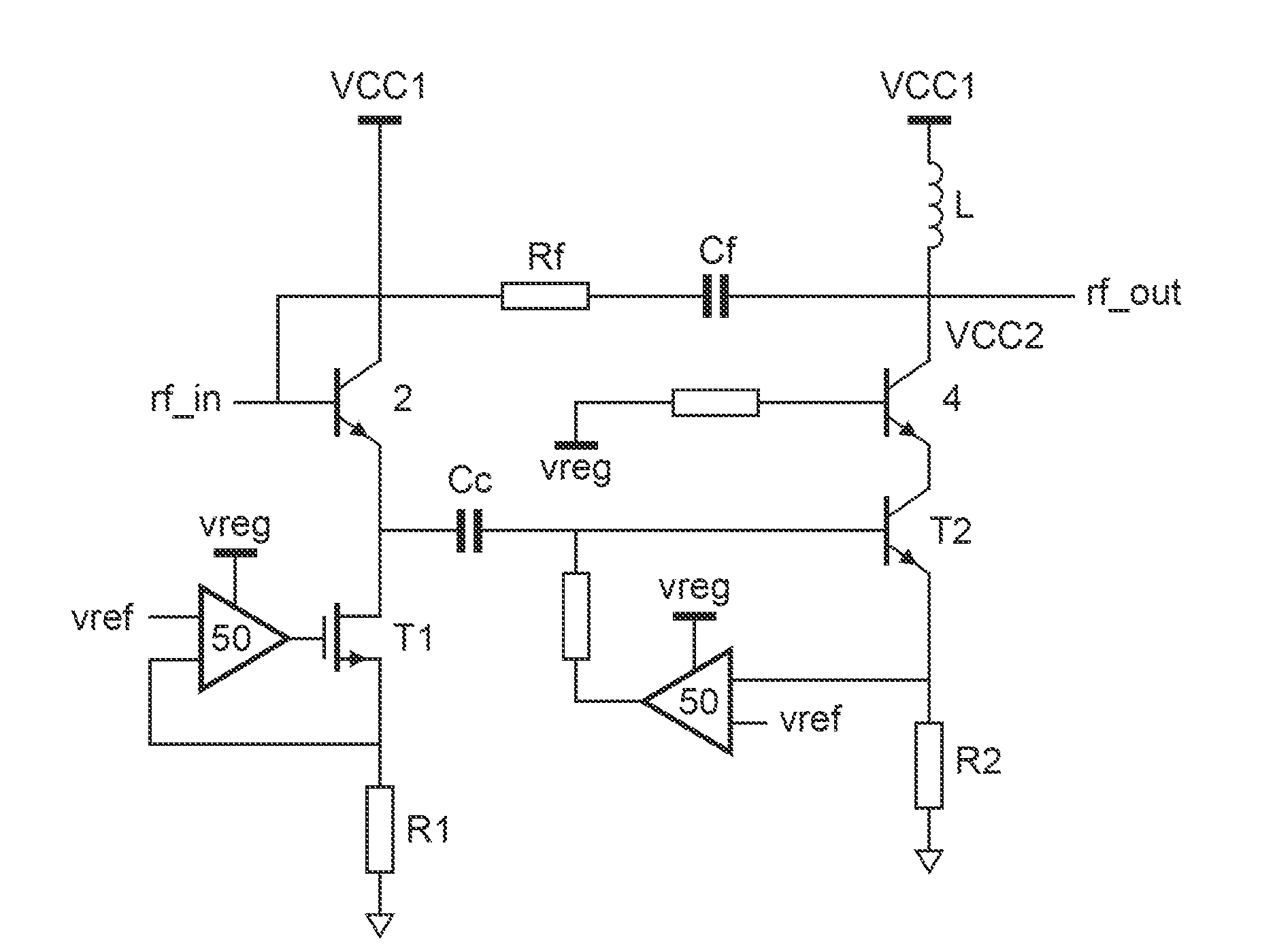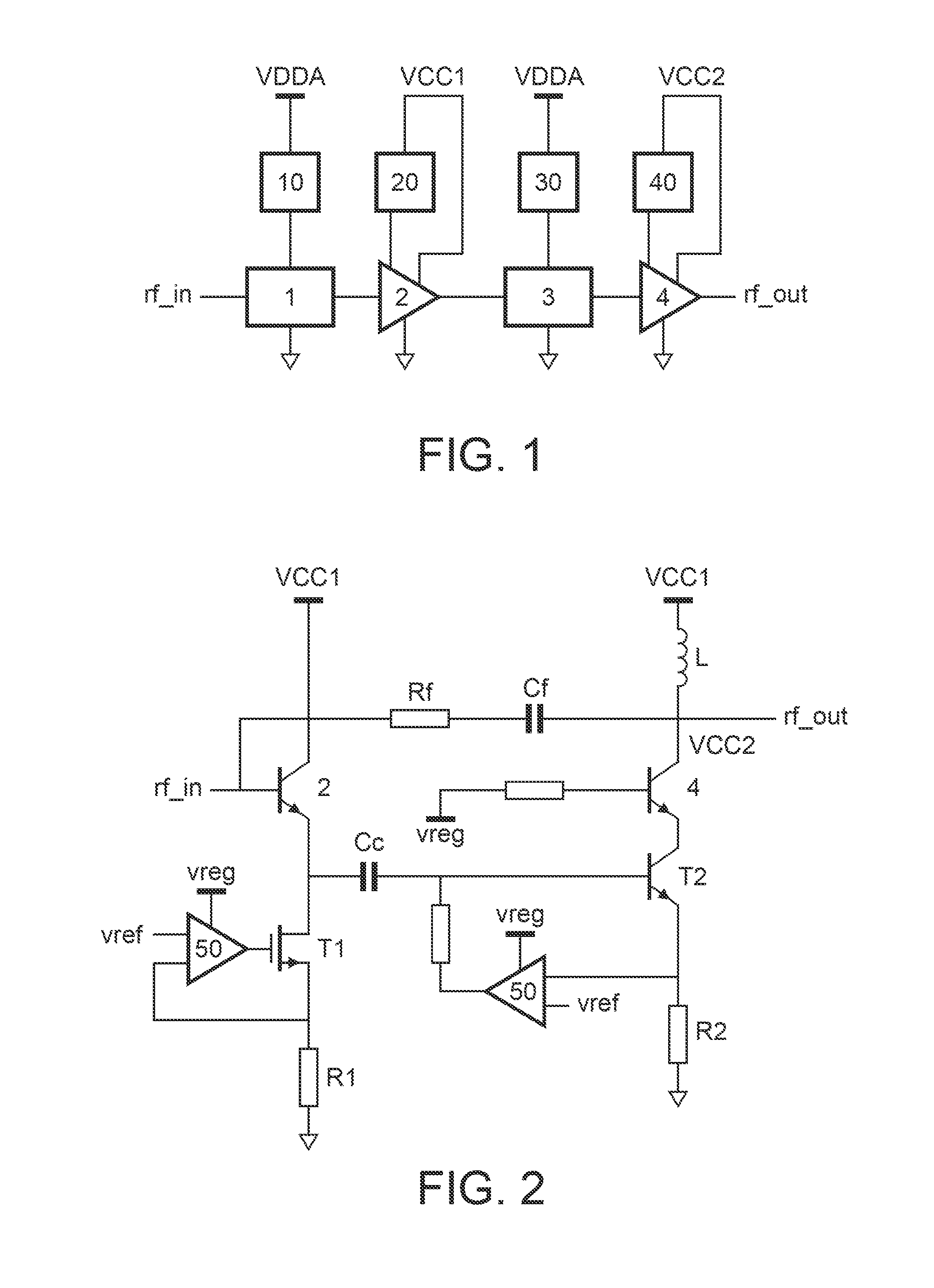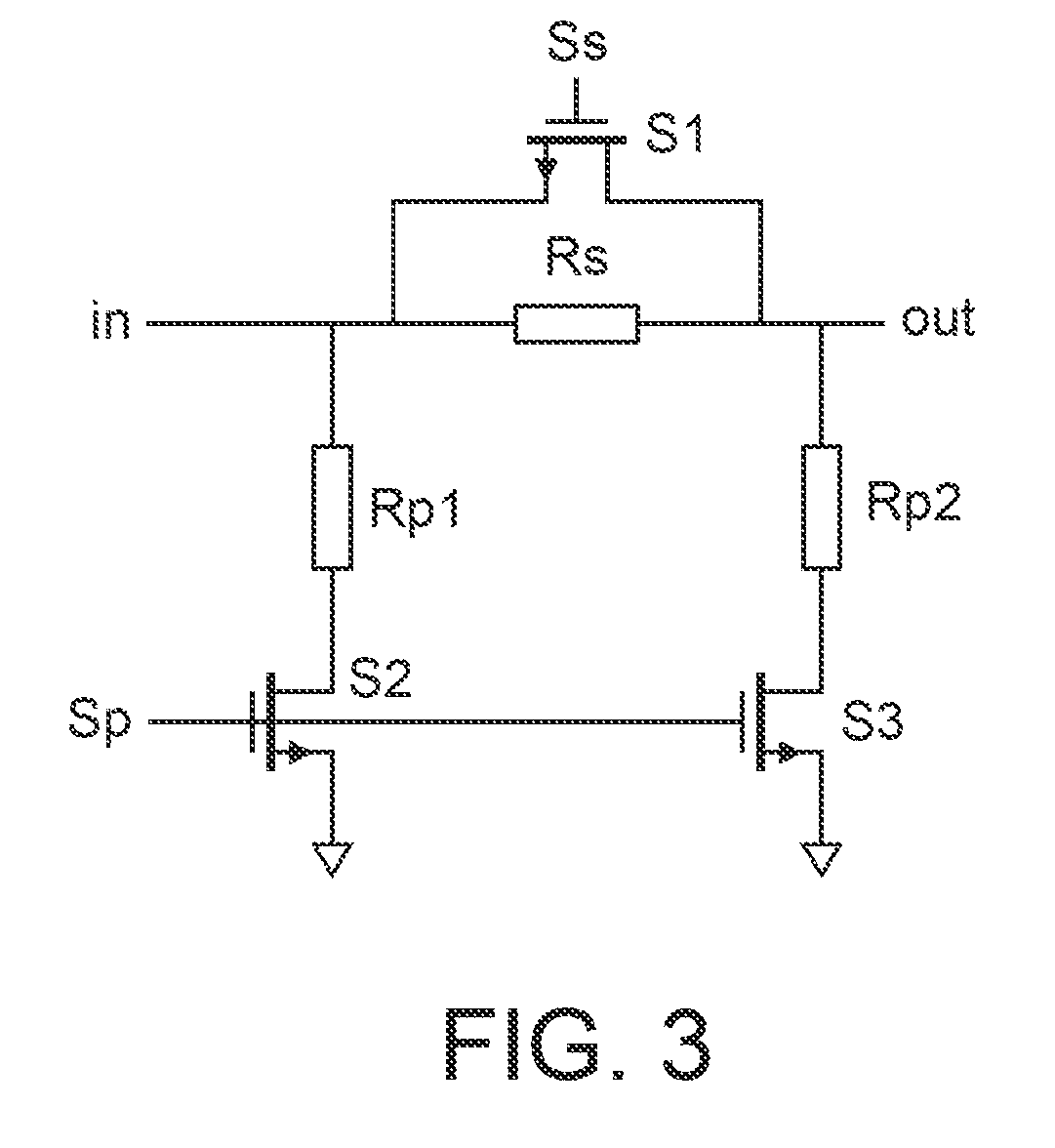Variable gain amplifier
a gain amplifier and variable gain technology, applied in amplifiers with impedence circuits, amplifiers with semiconductor devices/discharge tubes, amplifiers, etc., can solve the problems of difficult adaptation of attenuators to amplifier impedances, generation of intermodulation noise, etc., to improve the noise figure and linearity of a vga
- Summary
- Abstract
- Description
- Claims
- Application Information
AI Technical Summary
Benefits of technology
Problems solved by technology
Method used
Image
Examples
Embodiment Construction
[0029]FIG. 1 depicts a variable gain amplifier, according to the invention. The variable gain amplifier comprises a first attenuator 1 for receiving an input signal rf_in and for transmitting a first attenuated input signal to a first amplifier 2 for amplifying the first attenuated input signal and for generating a first amplified signal to a second attenuator 3 for attenuating the first amplified signal and for transmitting a second attenuated signal to a second amplifier 4 for amplifying the second attenuated signal and for generating an output signal rf_out. The first attenuator 1 is supplied from a first supply voltage source 10. The second attenuator 3 is supplied from a second supply voltage source 30. The first amplifier 2 is supplied from a third supply voltage source 20, and the second amplifier 4 is supplied from a fourth supply voltage source 40. Each of the voltage sources is provided by respective separate voltage regulators. The advantage of separating the supply volta...
PUM
 Login to View More
Login to View More Abstract
Description
Claims
Application Information
 Login to View More
Login to View More - R&D
- Intellectual Property
- Life Sciences
- Materials
- Tech Scout
- Unparalleled Data Quality
- Higher Quality Content
- 60% Fewer Hallucinations
Browse by: Latest US Patents, China's latest patents, Technical Efficacy Thesaurus, Application Domain, Technology Topic, Popular Technical Reports.
© 2025 PatSnap. All rights reserved.Legal|Privacy policy|Modern Slavery Act Transparency Statement|Sitemap|About US| Contact US: help@patsnap.com



